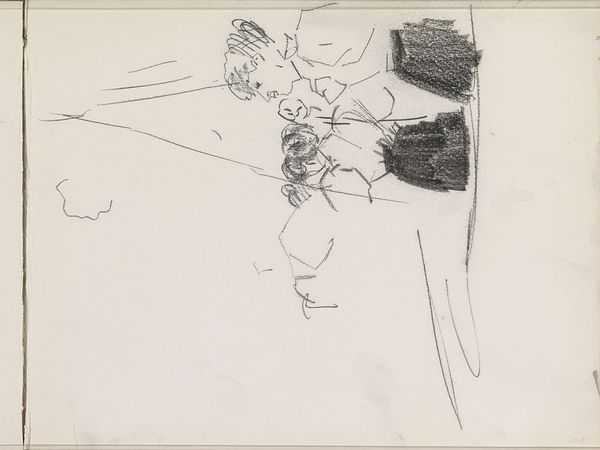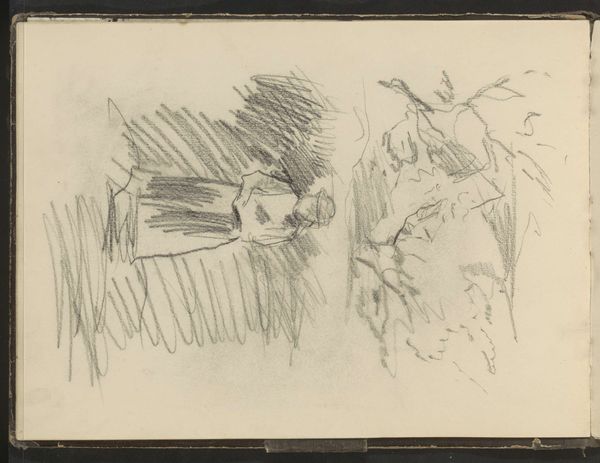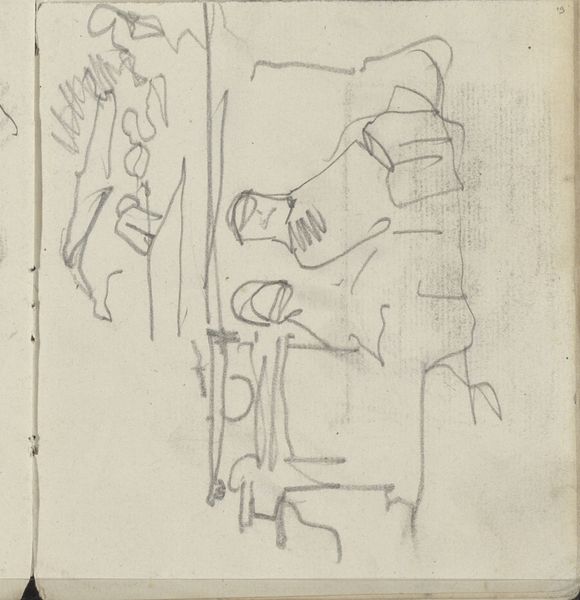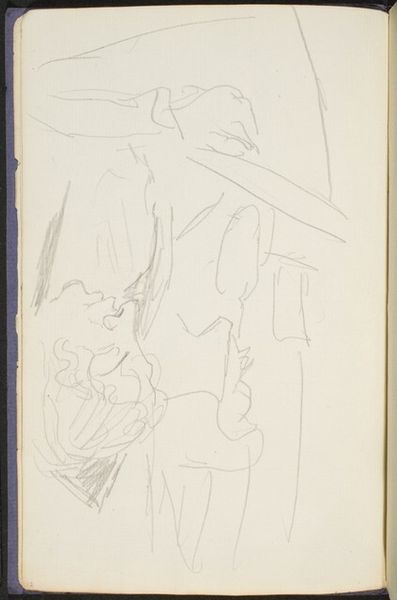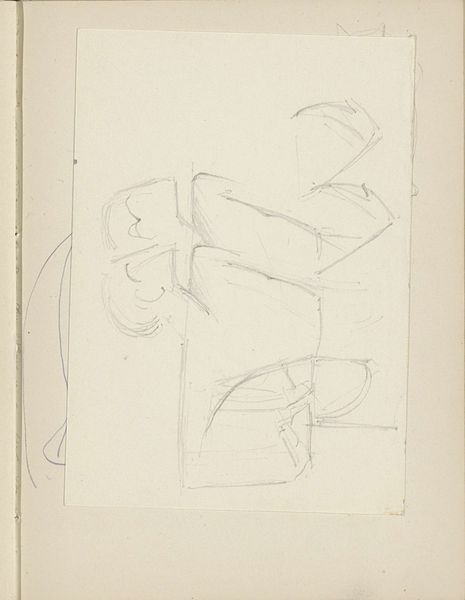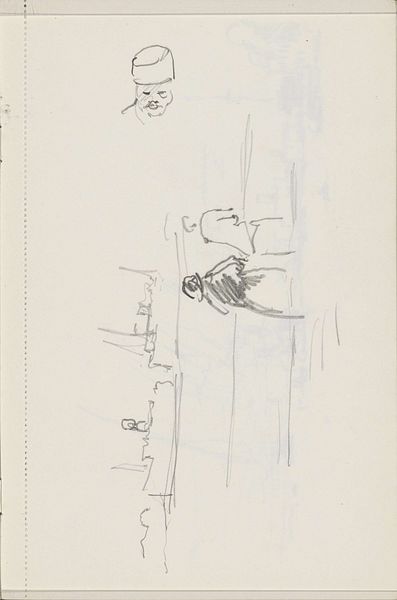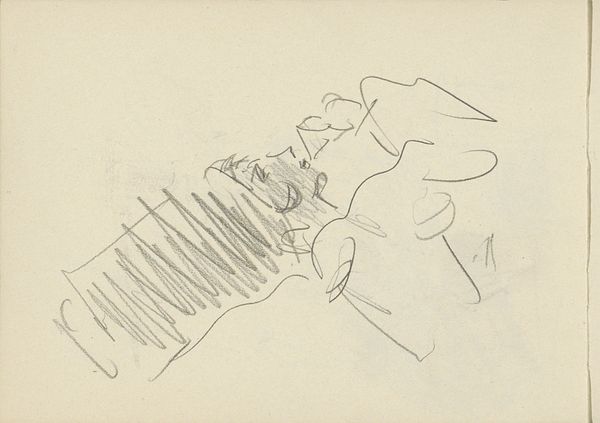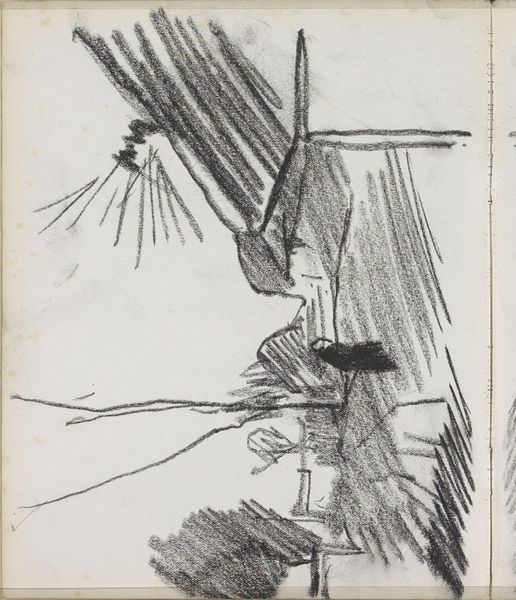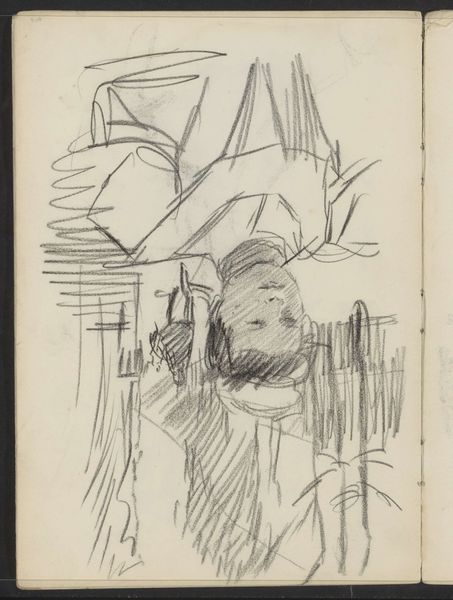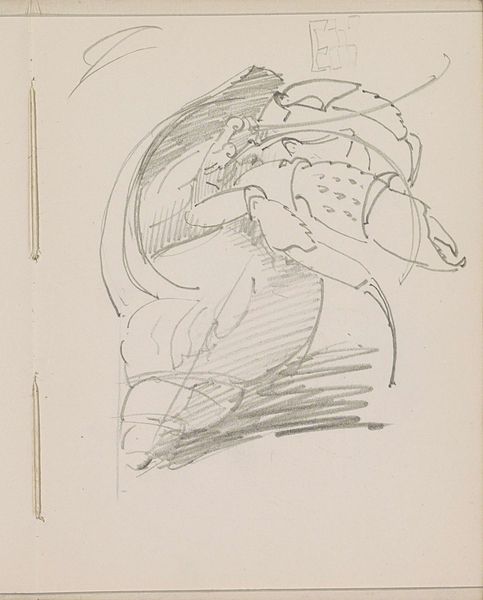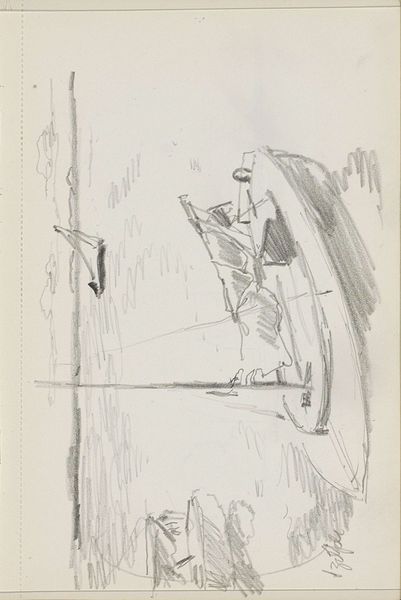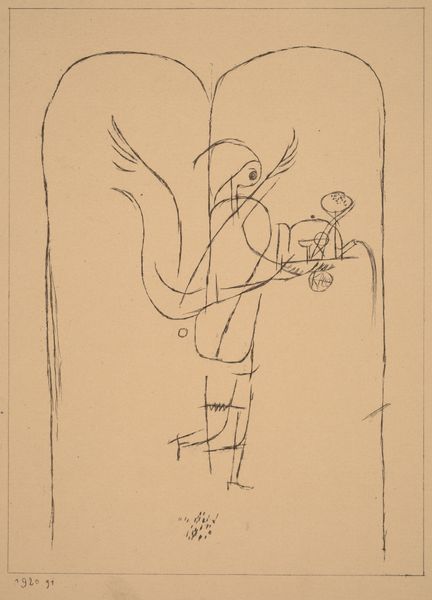
drawing, paper, pencil
#
drawing
#
pencil sketch
#
etching
#
paper
#
form
#
pencil
#
line
Copyright: Rijks Museum: Open Domain
Curator: Welcome. Today, we are observing "Vaas met bloemen op een tafel", or "Vase with flowers on a table", a drawing by Reijer Stolk, dating back to circa 1916, presently held at the Rijksmuseum. Editor: My first impression is of quiet simplicity. The soft pencil strokes give it an ephemeral, dreamlike quality, don't you think? Curator: Precisely. Considering the historical context of 1916, during the First World War, this simple scene might offer a counterpoint, a deliberate act of focusing on the intimate and domestic sphere amidst global conflict. This aligns with Stolk's known exploration of form, particularly within the constraints of a difficult period. Editor: The use of pencil suggests a readily available, inexpensive material. It makes you consider what was accessible to artists, the constraints placed upon creative practice due to scarcity, but perhaps too, a conscious choice to engage with humbler materials. The visible marks highlight the labor, the physical act of sketching. Curator: And within the depicted form, note the subtle gestures in the pencilwork to evoke a vase of flowers on a table, framed almost architecturally with a backdrop. Was Stolk perhaps considering traditional depictions of floral still lifes and consciously rendering them with sparse lines, questioning academic norms? Editor: There's a raw honesty. We see the artist's hand at work, revealing not just the image but the process. And it invites us to think about the social function of art during times of hardship, when creating objects that held meaning would become critical. What meaning could someone attach to such an immediate still-life image? Curator: That immediacy itself carries meaning. Stolk might be subtly emphasizing the resilience of life through this everyday subject. Furthermore, by depicting an ordinary scene in an intimate manner, it speaks to issues of class and gender norms during his time. His chosen subject gives form to the hidden experiences, where gender, class, and other power imbalances affected ordinary citizens. Editor: It’s an intriguing testament to the power of materials and accessible art making to explore difficult sociopolitical dimensions, isn't it? A reminder that art does not always need to be loud to be deeply impactful. Curator: Indeed. This small work becomes a potent reminder to look closer at the intersecting realms of labor, class, and survival embedded in the creation of even the simplest image.
Comments
No comments
Be the first to comment and join the conversation on the ultimate creative platform.
